Less power and less weight almost always makes for a better electric vehicle.
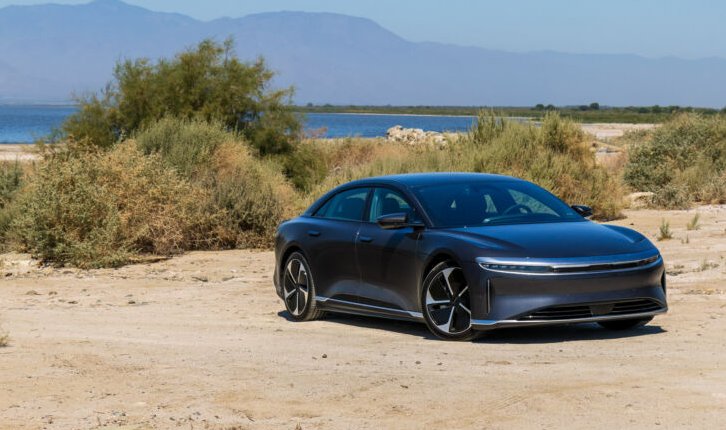
It’s the lowest-priced entry from an automotive startup, so I wasn’t expecting the world.
Too many EV startups do a great job on the electric side but not so great on the car side of the equation—and sometimes they don’t do either particularly well. But the Air Pure wasn’t just good; it was excellent. It’s the rare car I had trouble finding flaws with, even after it locked me out in a parking lot.
The Pure RWD is the filtered version of the Lucid Air. It doesn’t have two motors, and it doesn’t offer a glass roof. It doesn’t have more horsepower than a Lamborghini, and it definitely doesn’t offer the 512 mile (824 km) range of the Air Grand Touring.
What it has is a single motor mounted in the rear that delivers 430 hp (320 kW). It’s not enough for rip-your-face-off EV acceleration, especially since I used the gentler Smooth drive mode for most of my time in the Air, but it is enough for a 0–60 run in a claimed 4.5 seconds, a number that just a few years ago would have been called supercar performance.
The Pure’s real advantage is on the scales. 4,564 lbs (2,070 kg) is no featherweight, but it is 424 lbs (192 kg) lighter than an Air Touring and 762 pounds (364 kg) lighter than an Air Grand Touring. The diet and the lack of a front-mounted motor pay dividends in almost every part of the experience.
Less is more
A lower weight and one fewer motor to spin are a boon for efficiency. The Grand Touring has an official efficiency estimate of 4.0 miles/kWh (15.5 kWh/100 km), the Touring with 20-inch wheels gets 4.15 (15 kWh/100 km). The official estimate for the model year 2024 Pure on the 20-inch wheels of my test unit is 4.48 miles/kWh (13.9 kWh/100 km).
That increases to 4.74 miles/kWh (13.1 kWh/100 km) with the 19-inch wheels, and the model year 2025 Air Pure can hit 5 miles/kWh (12.4 kWh/100 km) with the smaller wheels, Lucid just announced.
- The Air has a distinctly American look, but it’s an elegant one. Evan Williams
- The Air is the most aerodynamic car on sale, with a drag coefficient of just 0.197. Evan Williams
- 20-inch wheels sap range somewhat. Evan Williams
- In case you forgot. Evan Williams
- The sloping rear can impinge on headroom for some. Evan Williams
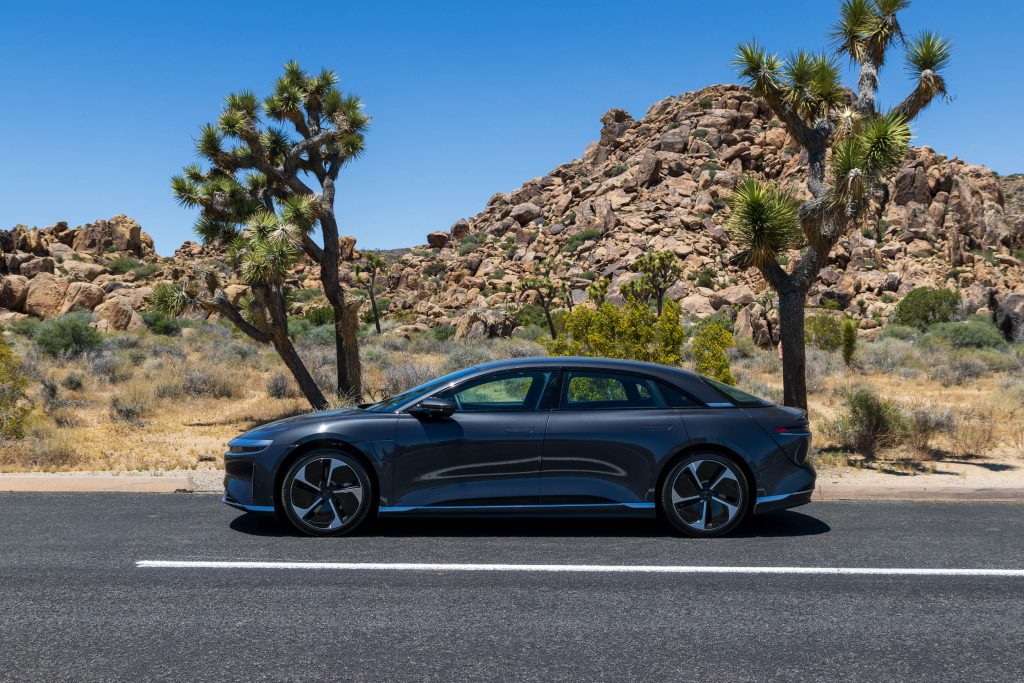
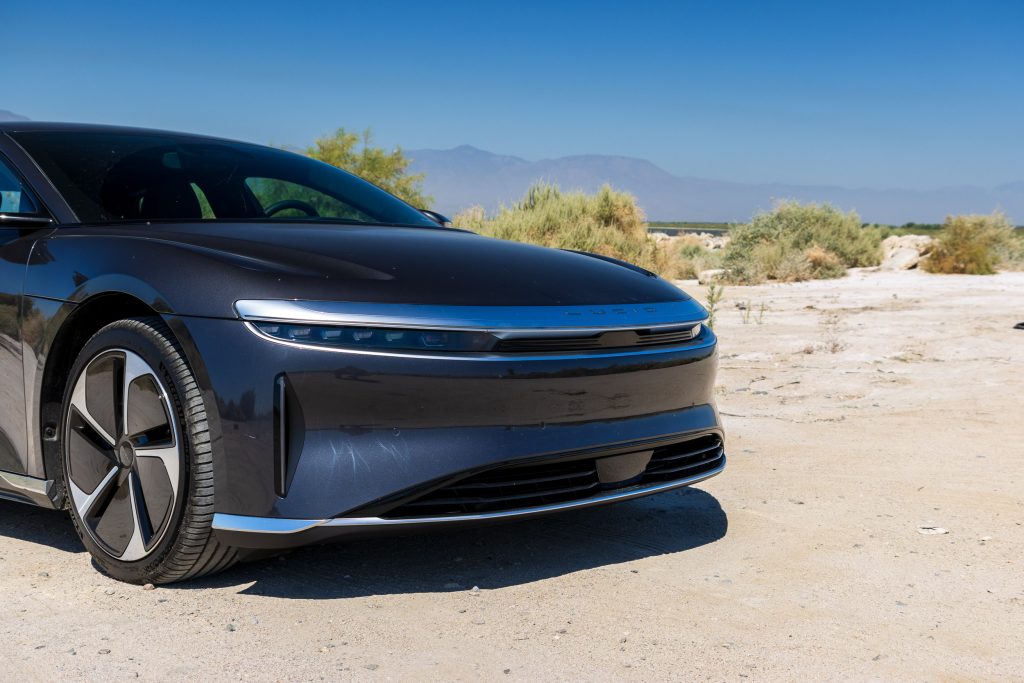
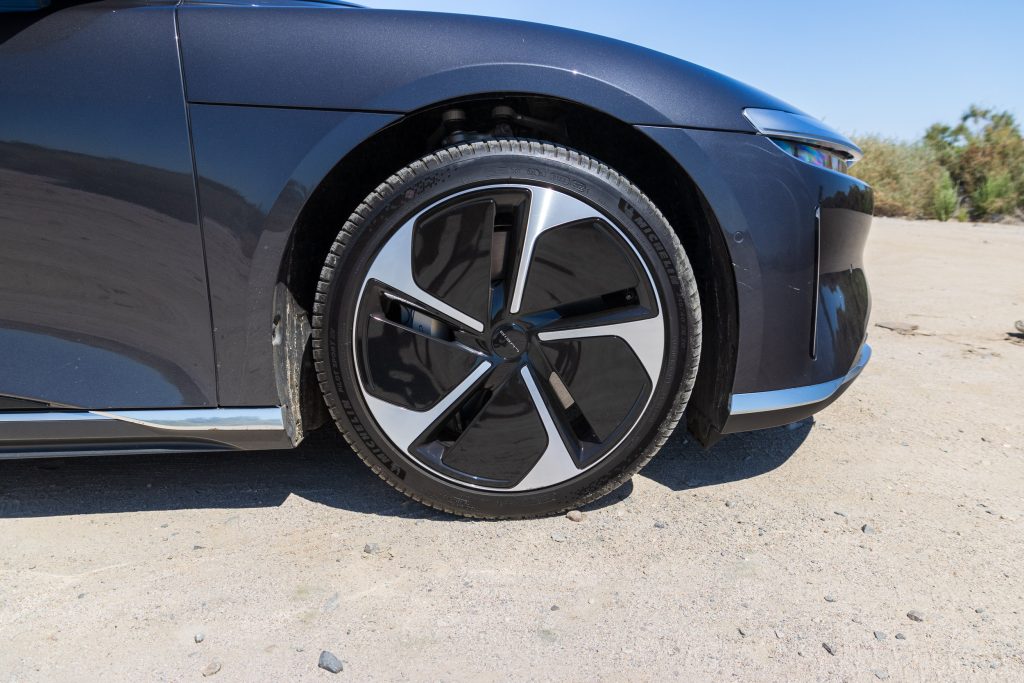
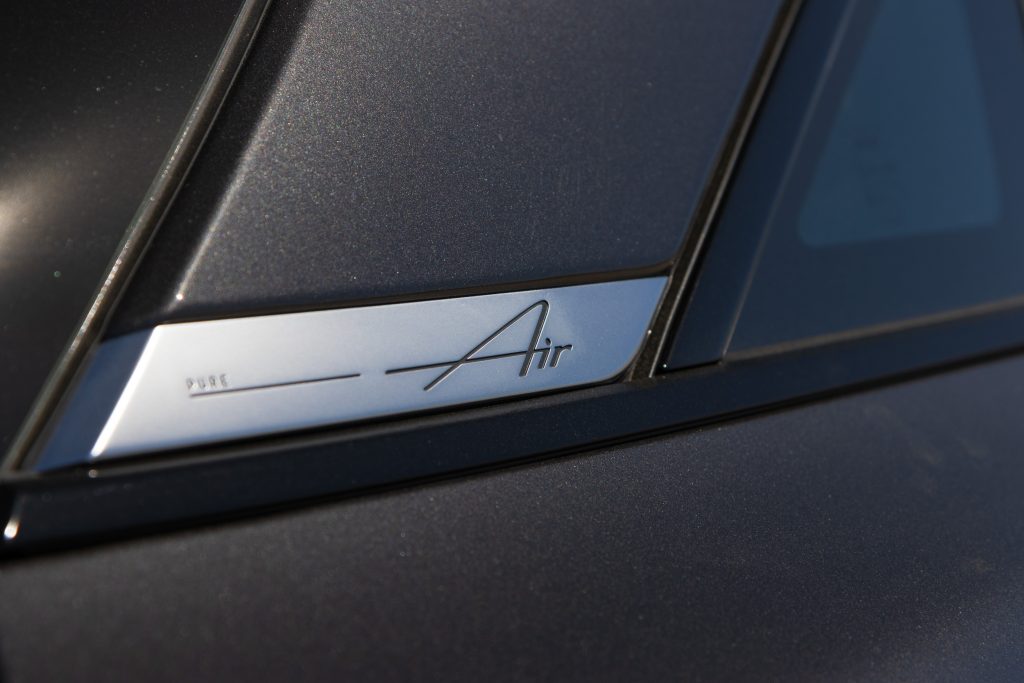
In 300 miles (482 km) of 70 mph (112 km/h) on interstate highways driving around Los Angeles, which included a trip through the hilly Cajon Pass, I saw 4.8 miles/kWh (12.9 kWh/100/km). In lower speed but max-AC driving around Palm Springs and through Joshua Tree National Park with triple-digit temperatures and liberal use of the max-power Sprint Mode, I saw 4.0.
ARS VIDEO
How Scientists Respond to Science Deniers
The highest indicated range I saw was 386 miles (621 km). That compares favorably with the 394-mile (534 km) official estimate because that full charge was sitting in the sun on a 93°F morning. It was hot, but at least the heat pump AC was up to the task; while the day kept getting hotter, my efficiency numbers didn’t drop.
The Air Pure doesn’t have the headline-grabbing 350 kW charging of the Grand Touring, but it is still capable of pulling down up to 250 kW. It also still has the Plug and Charge capability of the rest of the lineup, and it worked seamlessly to connect to the three Electrify America chargers I tried in my time with the car.
I saw a peak of 200 kW on my charge attempts, but all were on near triple-digit hot days and starting from a SoC above 25 percent at stations where every 350 kW plug was occupied. Lucid claims 17 minutes to get 200 miles (321 km) of charge (with the 19-inch wheels, my tester had 20s), which is slower than the 12 minutes of the Grand Touring but still quick.
A lower weight is good for the ride, too. The Pure has the same adaptive damping suspension with steel springs as the other trims and the always firm but never stiff ride was a dream. LA-area freeways are far more cratered than they have any right to be for a city that doesn’t see freeze-thaw cycles, but the Air Pure just soaks bumps up.
I took the Air chasing canyons and looking for the eclectic sites you can only find in the desert, like a home built underneath the largest rock in North America beside a runway meant for UFOs to land. On those twisty canyon roads, the Air’s steering was a delight. It firms up well under load, and while we’ve criticized a lack of feedback from the two-motor Grand Touring in the past, the RWD Pure doesn’t have this issue.
No front motor means less weight acting on the front suspension, and it also means that the tires (and the steering rack) aren’t made to deal with the forces of acceleration and cornering at the same time. While either change is good for the driver, together, they make the car more fun to drive.
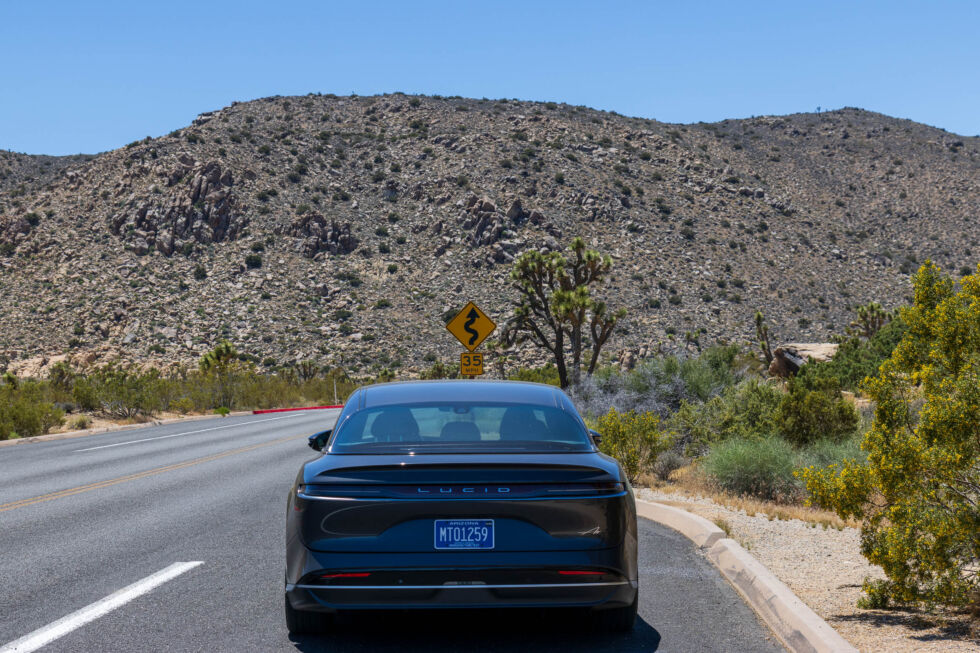
The Air Pure might not be the hot-handling ride that is the Porsche Taycan, but it is definitely a more willing twisty-road companion than Audi’s e-tron GT, even in that car’s RS form.
Driving around the desert means you run into some roads that are well overdue for repaving and some that were never paved at all. The Pure wasn’t just comfortable on those washboard sand roads—it was silent. There wasn’t a single rattle or creak of complaint from the cabin. The rough patches of road showed off the Air’s impressive build quality, an area where not just other EV builders but even legacy automakers could learn a few things.
The infotainment is improved
Pure has the same 34-inch uncovered glass cockpit display as the pricier Air models and the same retractable lower center screen. The wall of glass uses a touch panel on the left to pop the trunk or open the charge door, while controls for things like the mirrors are on the lower center screen. The center of the dash screen gives you trip information and turn-by-turn directions, with limited customization options. It also shows a handy dial that lets you know how much energy you’re expending or regenerating. Turn on DreamDrive, Lucid’s name for its adaptive cruise advanced driver assistance system, and you get a display that shows the road and traffic ahead of you.
- The Air’s interior is restrained. Evan Williams
- Commonly used controls live in this dedicated area of the 34-inch display. Evan Williams
- You cannot project a map to this screen unless you also have the map running on the main screen. Why? Evan Williams
- When Lucid showed us its alpha prototype back in 2017, the reclining rear seats were one of the more eye-catching features. Those have yet to reach production as Lucid has concentrated on ironing out more important bugs instead. Evan Williams
- This doesn’t look like 22.1 cubic feet (625.8 L), but wait, pull that tab and go to the next photo. Evan Williams
- Open that cover and you’ll find the rest of the rear cargo volume. There’s also a 10 cubic foot (238 L) frunk as well, making this a car that can easily carry four people’s luggage. Evan Williams
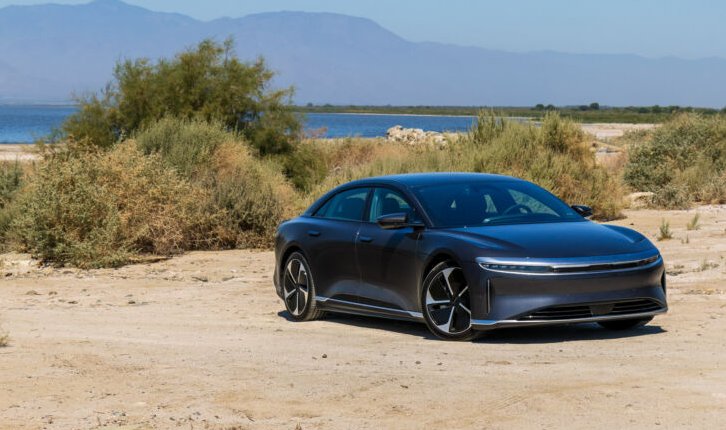
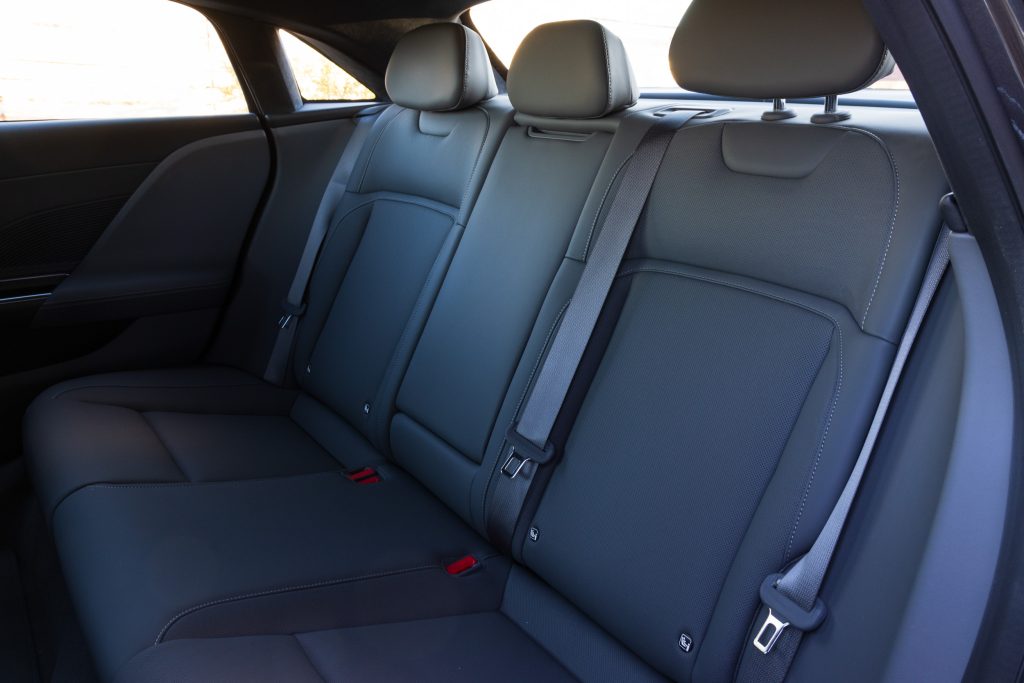
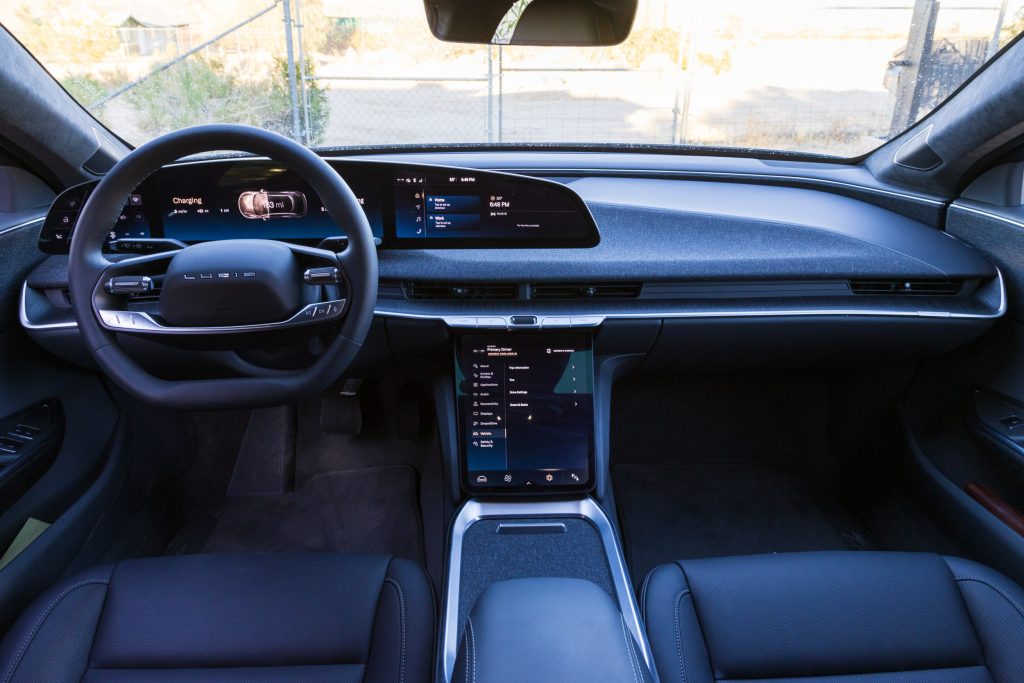
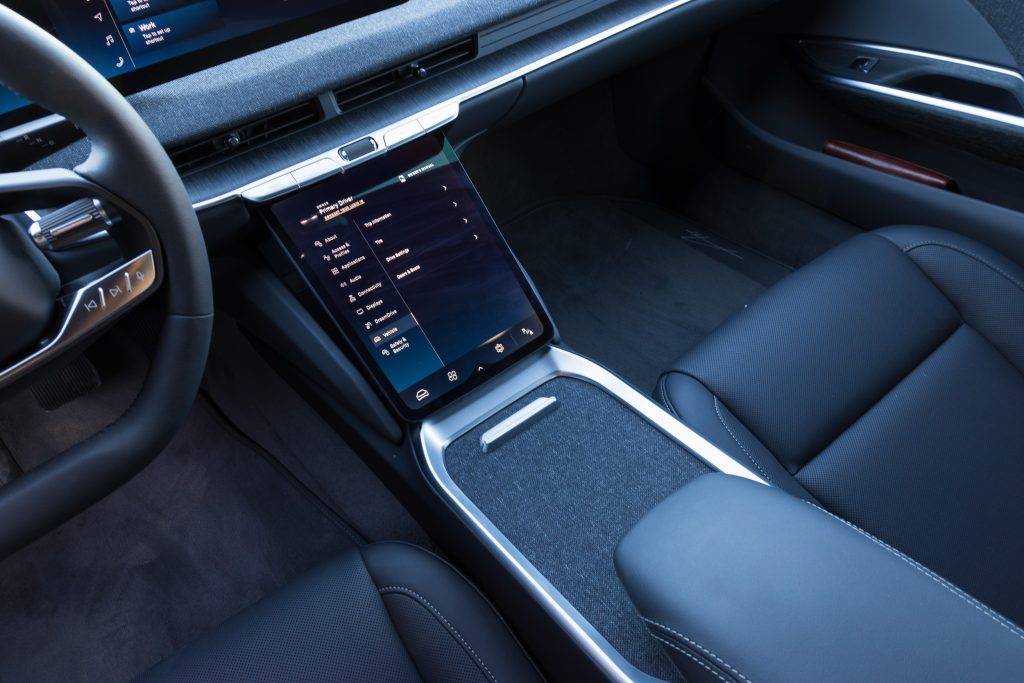
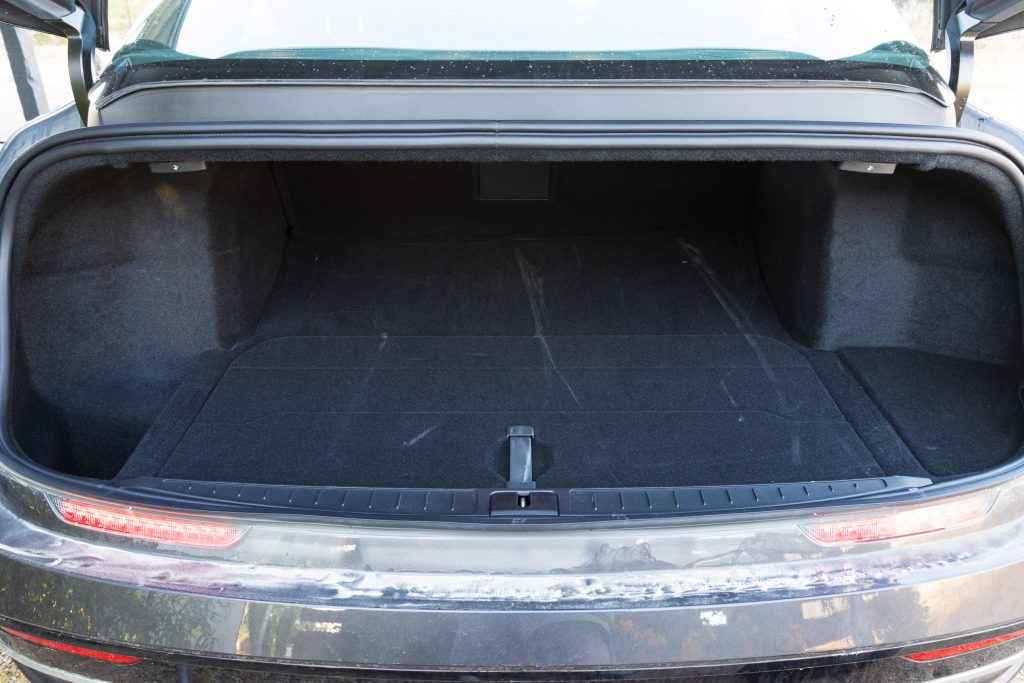
It’s a very responsive system with an easy-to-grasp UI. If you don’t like to rely on touch controls, there are still physical controls for fan speed and temperature for both front passengers. I was never able to get a handle on the voice controls, though, and while Lucid has added Apple CarPlay, Android Auto is still “coming later.”
There was one strange quirk in the system. The Air lets you display the map on the lower screen, which is also where you can see a list of chargers and other destinations. But you can only see that map if you have the upper screen on navigation mode as well. You can have the upper screen on nav and the lower screen on other pages, but not the other way around. Let me have audio up top with nav down low, please.
The Air is a short, big car, 195.9 inches (4,956 mm) long, but it feels longer. That’s mostly because it has an extremely low roofline, which is a big part of the car’s incredible 0.197 coefficient of drag. It’s a long way down to get into that driver’s seat (I’m 6 feet, 3 inches, but my 5-foot-2 passenger had the same problem). Once you get down there and in, though, the Air feels huge. It’s very wide and has a lot of headroom, even with a headliner instead of glass. The A-pillars are still as thick as a telephone pole, but they didn’t seem to cut noticeably into my view of the outside. Forward, that is. Looking rearward, especially for parking, was a challenge.
In back, the Air has plenty of space. With the driver’s seat most of the way back, I still had trouble reaching the front seats. The car’s tumblehome—how the window glass tapers in against the main body—is very pronounced, and that can cut into the space back there for the head and shoulders. While it’s usually the roof that’s touching the top of my head in the back seat of a vehicle, this time it was the speaker above the door brushing my ear. Slouch down and use some of that legroom and the problem goes away.
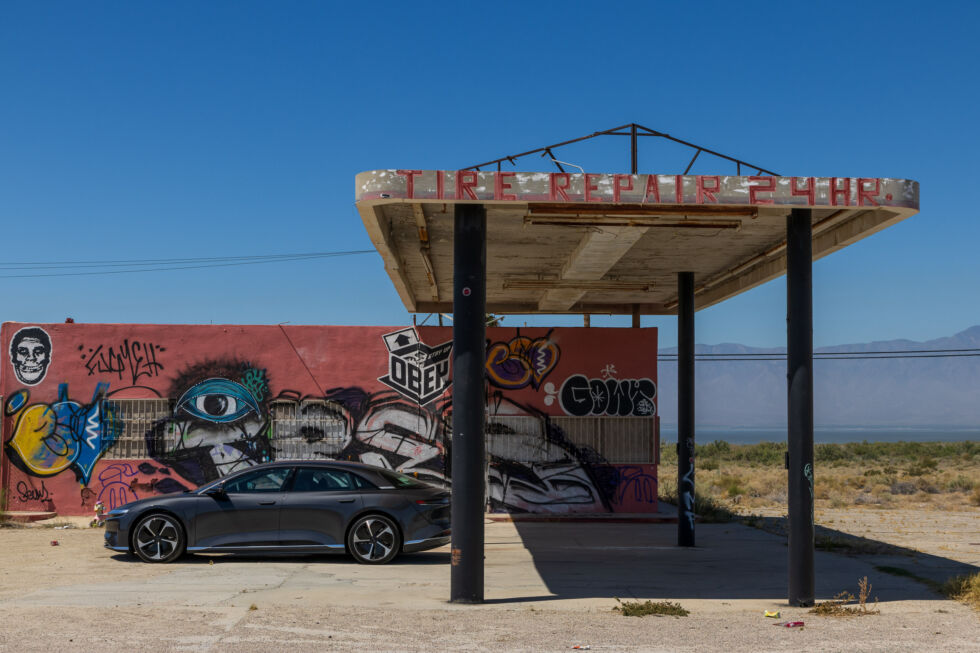
Lucid just keeps improving the Air, with better build quality, over-the-air updates, and now this rear-motor model. It’s more efficient and a better drive, but the biggest perk might be its price. This one starts at $69,900, $8,000 less than a Touring and a whopping $40,000 less than a Grand Touring. And for model year 2025, the Air Pure—already the most efficient car on sale in the US—just got more efficient. For that price, you’re getting a package that should make Tesla scared.




